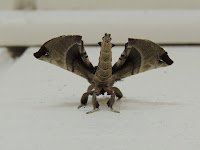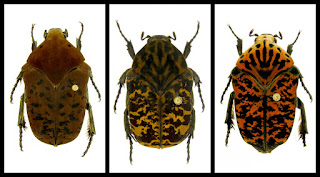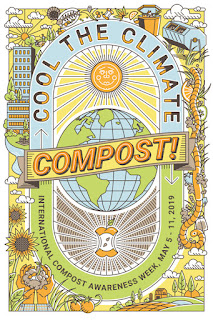 |
| Aedes albopictus |
coming in clutching their phones or carrying in carefully preserved specimens in glass jars or baggies
(not to mention those that send us emails with pictures) and they all ask a variation of the same question: “What’s this bug?’. And we love it. Not only are we generally crazy bug people, we embrace every opportunity to direct a person away from wholesale poisoning in the name of pest control and to guide them to a better, nature-loving choice. Some of what we come across is interesting in a “that’s weird” kind of way and some is interesting in a “oh, that’s what that looks like” way. These interactions can be entertaining as well as informative and I’d like to share some of this with you. So, with this post, I am initiating an on-going series to highlight some of these.

We begin with the Asian Tiger Mosquito (Aedes albopictus). Most people are surprised when they really get a look at these small guys (about 1/4" long) because they are actually quite lovely and way more decorative than one might think a mosquito could be. Their trademark black and silvery white striping may vary somewhat, but this species is easily identified by the white “racing” strip that runs from the front of the head down to its back. If this coloration seems more zebra than tiger, there may be a hint to this name thing in its origin story: In 1894, an entomologist, F.A.A. Skuse, in Sydney received a previously undocumented specimen from Calcutta. He referred to the insect as his “banded mosquito of Bengal” and gave it the albopictus name, which means “painted white”. Somewhere over time, this reference to Bengal became connected to this most famous animal of Bengal, the tiger. The ferocity of this insect probably played a part is the name as well. Besides, “Asian Zebra Mosquito” just doesn’t sound right.
 |
| Lucky Bamboo |
 |
| Aedes aegypti larvae |
 This biggest issue with these mosquitoes is that they are reliable vectors for some very serious diseases. These diseases include Chikungunya, Zika, Encephalitis, Dengue, Yellow Fever, West Nile Virus and Heartworms in dogs. Of all the big names of viral diseases carried by mosquitoes, the only one the Asian Tiger does not carry is Malaria; that virus belongs to the Aedes aegypti species. It is important to note that the viruses carried by the Asian Tiger in the U.S. have (to this date) only affected animals; there is no evidence of human disease. So, although your risk may be fairly low, take care to protect your animals from potentially devastating bites as you are outside enjoying yourself this summer. Here are some ideas from my blog.
This biggest issue with these mosquitoes is that they are reliable vectors for some very serious diseases. These diseases include Chikungunya, Zika, Encephalitis, Dengue, Yellow Fever, West Nile Virus and Heartworms in dogs. Of all the big names of viral diseases carried by mosquitoes, the only one the Asian Tiger does not carry is Malaria; that virus belongs to the Aedes aegypti species. It is important to note that the viruses carried by the Asian Tiger in the U.S. have (to this date) only affected animals; there is no evidence of human disease. So, although your risk may be fairly low, take care to protect your animals from potentially devastating bites as you are outside enjoying yourself this summer. Here are some ideas from my blog.In late 2017, the EPA approved the use of male Asian Tiger Mosquitoes that have been infected with the Woolbachia bacteria as a biopesticide. These non-biting boys are then let loose to breed with wild females. The bacteria renders their offspring unviable, eventually causing the population to drop. These bacteria-ridden deadbeat dads are being sold under the moniker “ZAP Males”.

These mosquitoes are pretty but they can be a real nuisance to you and a real danger to your animals. The best way to protect yourself is to cover yourself up when outdoors and to deprive them of breeding space, but remember that they can breed in something as small as a bottle cap - even a flower or plant. We offer a comprehensive assortment of mosquito control products to help you and further information here.
If you are interested in what the USDA has to say about the Asian Tiger Mosquito, here is a Public Service Announcement video they put out. You can also keep up to date with these insects and other invasive species on their website here.
Happy bite-dodging this summer!



















